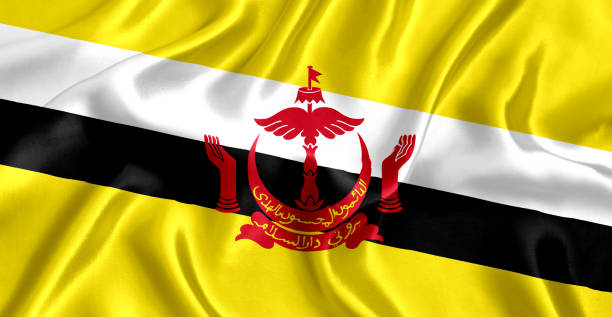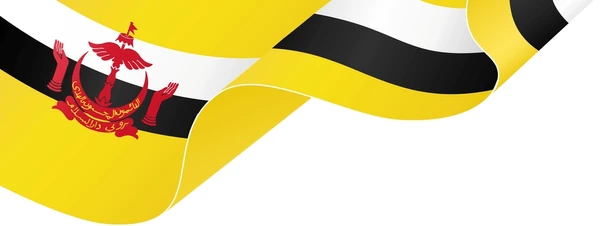
Brunei Flag: History, Meaning, and Symbolism
The Brunei flag is one of the most distinctive national flags in the world. With its unique color combination and deep historical significance, the flag serves as a representation of Brunei’s heritage, monarchy, and Islamic values.
This article explores the history, symbolism, and meaning of the Brunei flag, detailing how it evolved over time and what each element represents. Whether you’re interested in vexillology (the study of flags), Brunei’s culture, or historical emblems, this guide provides everything you need to know about the Brunei flag.
History of the Brunei Flag
The Brunei flag has a rich history that reflects the country’s political and cultural development. Before adopting the current flag, Brunei used several different banners to symbolize the Sultanate’s authority.
Early Flags of Brunei
Before the introduction of the modern Brunei flag, the country primarily used plain yellow flags, which were symbolic of the Sultan’s authority. Yellow has long been associated with royalty in Southeast Asia, and it remains a dominant color in the current flag.
Adoption of the Modern Brunei Flag (1906)
The modern Brunei flag was officially adopted on September 29, 1959, during the period when Brunei was a British protectorate. However, its design and elements date back to an earlier period in 1906, when Brunei and Britain signed an agreement defining Brunei’s status as a protectorate.
Brunei’s Independence and Flag Confirmation (1984)
On January 1, 1984, Brunei gained full independence from Britain. The existing flag design remained unchanged, symbolizing the nation’s sovereignty and rich traditions. The Brunei flag has since been a national symbol representing the country’s identity and monarchy.
Symbolism and Meaning of the Brunei Flag
Each element of the Brunei flag has a specific meaning deeply rooted in Islamic values, governance, and the country’s historical identity.
1. The Colors of the Brunei Flag
The flag consists of four colors:
- Yellow – The dominant color of the Brunei flag symbolizes the Sultan’s authority and royalty.
- Black and White Diagonal Stripes – These represent the chief ministers of Brunei, known as Pengiran Bendahara (Prime Minister) and Pengiran Pemancha (Senior Minister).
- Red Emblem (Crest) – Represents Brunei’s national identity and Islamic faith.
2. The National Emblem of Brunei
At the center of the Brunei flag is the national emblem, which consists of several important symbols:
A. The Royal Parasol (Payung Ubor-Ubor)
The large parasol represents monarchy and leadership, signifying the protection and rule of the Sultan.
B. The Two Hands (Simpur Hands)
Two outstretched hands symbolize government protection, justice, and the welfare of the people. It reflects Brunei’s Islamic values of ensuring care and security for its citizens.
C. The Crescent (Symbol of Islam)
The crescent moon in the emblem signifies Islam, which is the official religion of Brunei. It highlights the nation’s commitment to Islamic principles in governance and daily life.
D. The Banner with Arabic Script
The banner beneath the crescent contains an Arabic inscription:
“Always in Service with God’s Guidance” (الدائمون المحسنون بالهدى)
This phrase reflects Brunei’s commitment to Islamic governance and divine guidance in national affairs.
E. The Wings (Symbol of Sovereignty and Justice)
The wings symbolize justice, prosperity, and peace, reflecting the Sultanate’s governance principles.
Significance of the Brunei Flag in Modern Times
The Brunei flag is more than just a national symbol—it reflects the country’s sovereignty, religious beliefs, and cultural heritage.
1. National Identity and Pride
For Bruneians, the flag is a source of national pride. It is displayed prominently in government buildings, schools, and public places, especially during national holidays and independence celebrations.
2. Symbol of Monarchy
As a Sultanate, Brunei places great importance on the monarchy. The yellow background of the flag continuously reminds the people of their historical loyalty to the Sultan.
3. Islamic Influence
Islam plays a central role in Brunei’s governance and cultural identity. The crescent moon and Arabic script on the flag reinforce the country’s dedication to Islamic principles.
4. Diplomatic Representation
Internationally, the Brunei flag is flown at diplomatic missions, embassies, and international events, symbolizing Brunei’s presence on the global stage.
Frequently Asked Questions (FAQs)
1. When was the Brunei flag officially adopted?
The Brunei flag was officially adopted on September 29, 1959, but it was confirmed as the national flag upon Brunei’s independence on January 1, 1984.
2. Why is the Brunei flag yellow?
Yellow represents royalty and sovereignty, signifying the authority of the Sultan in Brunei.
3. What do the black and white stripes on the Brunei flag mean?
The black and white diagonal stripes represent the two chief ministers of Brunei:
- Pengiran Bendahara (Prime Minister)
- Pengiran Pemancha (Senior Minister)
4. What is the meaning of the crescent on the Brunei flag?
The crescent symbolizes Islam, the official religion of Brunei, signifying the nation’s commitment to Islamic values and governance.
5. What does the Arabic inscription on the Brunei flag say?
The Arabic script on the banner reads:
“Always in Service with God’s Guidance” (الدائمون المحسنون بالهدى)
This reflects Brunei’s commitment to Islamic principles in governance.
6. Has the Brunei flag changed over time?
Yes. Before the modern Brunei flag, the country used plain yellow flags to represent the Sultan’s authority. The current design was introduced in 1906 and officially adopted in 1959.
7. How is the Brunei flag used in official events?
The Brunei flag is displayed during national holidays, royal events, and diplomatic ceremonies. It is also flown at government institutions and public celebrations.
Conclusion
The Brunei flag is a powerful symbol of the country’s heritage, monarchy, and Islamic identity. Its distinctive colors, national emblem, and rich symbolism reflect the values and governance of Brunei.
From its historical origins to its present-day significance, the Brunei flag remains an important representation of national pride and sovereignty. Whether seen at international summits, national celebrations, or historical sites, the Brunei flag continues to be a symbol of the nation’s strength, unity, and deep-rooted traditions.



